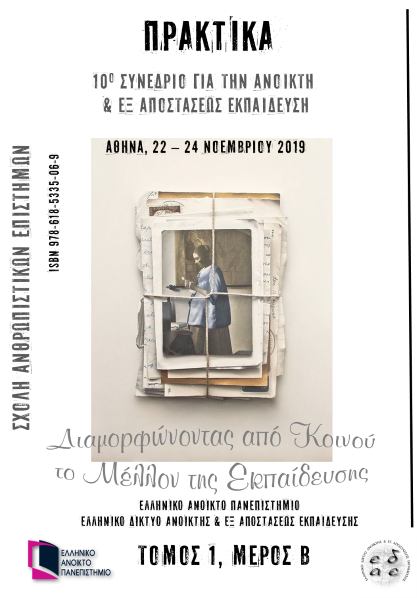Εφαρμογές και δυναμική της Ψηφιακής Αφήγησης στη Σχολική Τάξη. Δημιουργία προσωπικών Ψηφιακών Αφηγήσεων από μαθητές Δευτεροβάθμιας Εκπαίδευσης.

Περίληψη
H Ψηφιακή Αφήγηση μπορεί να αποτελέσει ένα νέο παιδαγωγικό εργαλείο, το οποίο δίνει τη δυνατότητα στους μαθητές να δημιουργούν νοήματα, να εκφράζουν απόψεις, σκέψεις, προβληματισμούς και συναισθήματα, δημιουργώντας τις δικές τους ψηφιακές ιστορίες, έναν συνδυασμό γραπτού κειμένου και ψηφιακών πολυμέσων όπως εικόνων, βίντεο, μουσικής και της δικής τους προσωπικής φωνής. Οι δεξιότητες πολυτροπικής έκφρασης σε έναν χώρο όπως το σχολείο, το οποίο παραδοσιακά προάγει την γραφή και την ανάγνωση, μπορούν να διευρύνουν τις δυνατότητες συναισθηματικής και γνωστικής ανάπτυξης των μαθητών αυξάνοντας την συναισθηματική δέσμευση τους προς έναν θεσμό του οποίου η αποτελεσματικότητα αμφισβητείται όλο και περισσότερο.
Η παρούσα έρευνα μελέτης περίπτωσης σε ένα σχολείο αστικής νησιωτικής περιοχής, προσπαθεί να αναδείξει τα συναισθήματα και τις απόψεις των μαθητών, ποικίλων σχολικών επιδόσεων, έχοντας για πρώτη φορά στη ζωή τους την δυνατότητα να δημιουργήσουν ψηφιακές ιστορίες ποικίλων νοημάτων.
Στην έρευνα αυτή χρησιμοποιήθηκαν οι ψηφιακές ιστορίες που δημιούργησαν 31 μαθητές. Ο βασικός σκοπός της έρευνας ήταν να εντοπίσει και να αναδείξει την δυναμική της Ψηφιακής Αφήγησης στη Σχολική Τάξη.
Για την συλλογή δεδομένων και των ευρημάτων της έρευνας αυτής χρησιμοποιήθηκαν εθνογραφικές πρακτικές όπως, ημιδομημένες συνεντεύξεις με μαθητές, γραπτές παρατηρήσεις πεδίου από τον υπεύθυνο εκπαιδευτικό και ερωτηματολόγιο περιορισμένου αριθμού ερωτήσεων το οποίο συντάχθηκε μετά το πέρας της δημιουργίας και παρουσίασης των ψηφιακών ιστοριών από τους μαθητές.
Λεπτομέρειες άρθρου
- Τεύχος
- Τόμ. 10 Αρ. 1B (2019)
- Ενότητα
- Τμήμα Β


